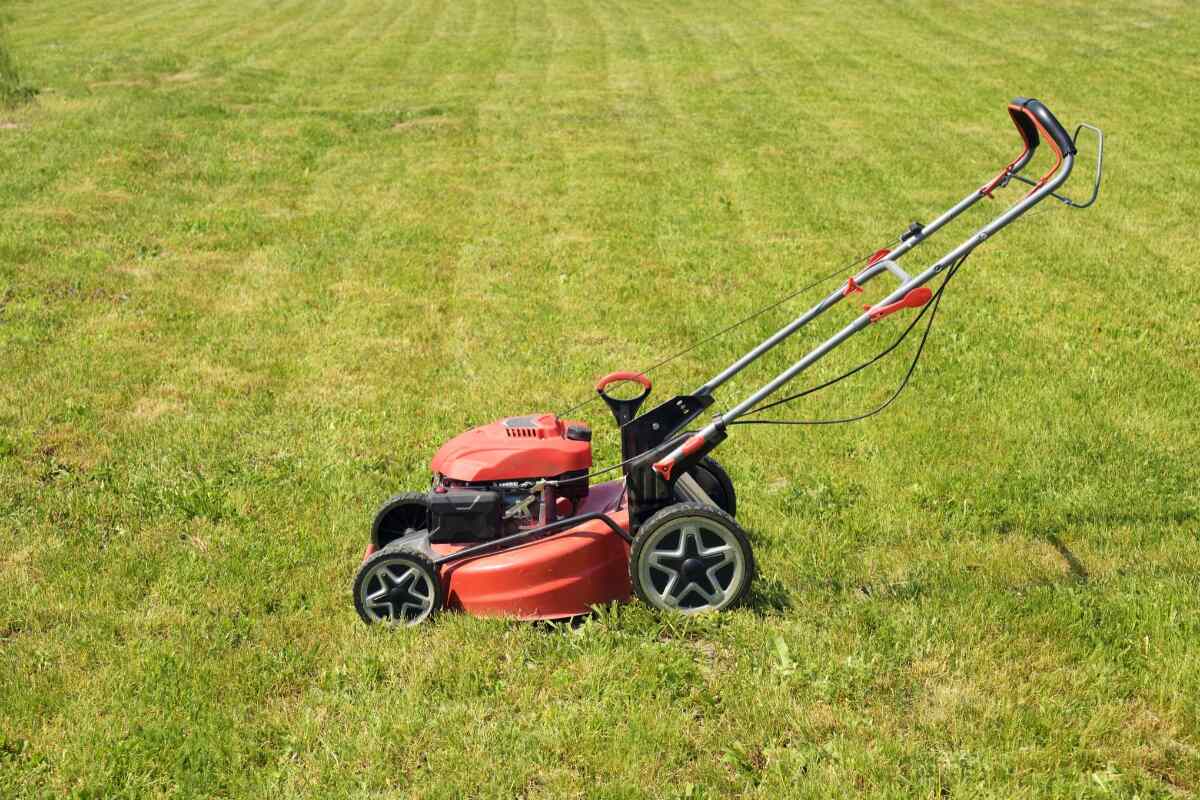
We talk in-depth about how and when to cut your lawn, but don’t spend much time discussing whether there are times when you shouldn’t be outside mowing. While it may seem surprising, there are a handful of instances when cutting your grass is more harmful to your lawn than leaving it alone. Here are the most critical times when it’s best not to mow your lawn.
When Should I Not Mow My Lawn?
Don’t mow when your grass is wet
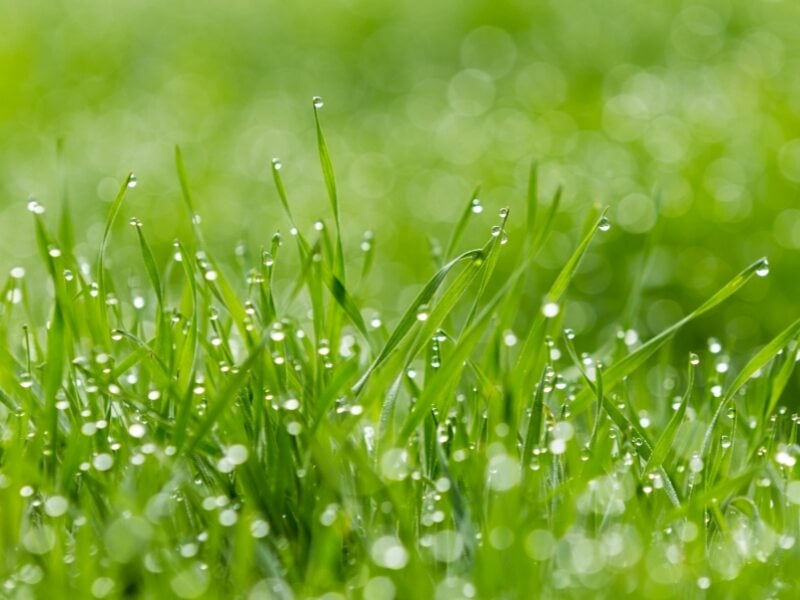
Mowing wet grass—whether with morning dew, after a rainfall, or following irrigation—will create an unsightly disaster and put your grass in danger.
Instead of spreading the mowed grass across the lawn in an even layer, you’ll end up with big, thick clumps of wet grass that smother everything underneath. When grass is buried like this, and airflow is essentially stopped, the lawn becomes more susceptible to pests and diseases.
Plus, when the soil is that wet, you run a higher risk of causing soil compaction from the weight of the lawnmower and your foot traffic.
Play it safe and wait until the grass dries. Then, you can fire up the mower.
Don’t Mow During a Drought
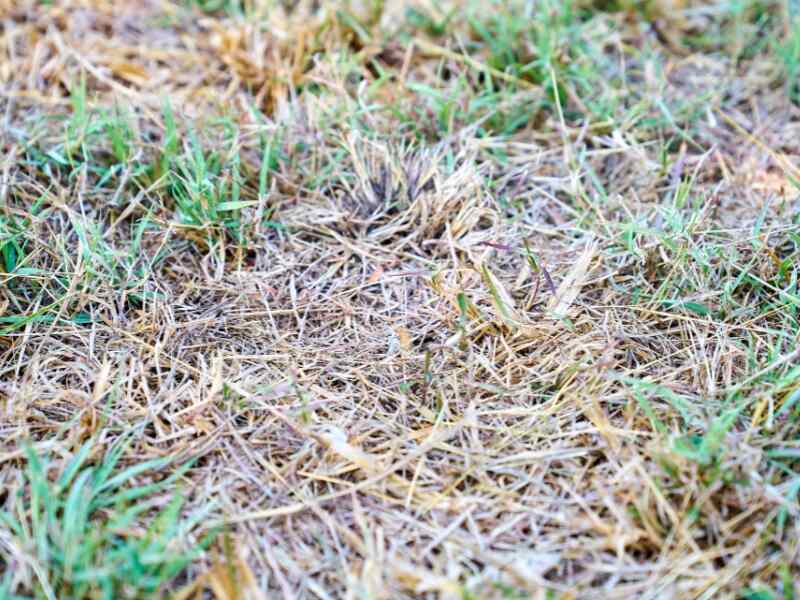
On the flip side, if it’s remarkably dry, you should also wait to mow. Mowing is stressful on your grass. Because of this, you don’t want to cut when it’s already under incredible environmental stress, like a lengthy dry spell or severe drought.
When drought-stressed, it’s hard enough on your grass; don’t compound it and mow during this time. Your grass probably doesn’t need it anyway, as it’s likely growing very little or extremely slowly.
If you mow your lawn when it’s sweltering and dry, the grass will lose treasured moisture, exacerbating drought stress. It can cause your grass to thin or may kill it off. Compared to taller grass, shorter turf can’t shade the soil as well, and more soil moisture will evaporate.
Pro tip: Need help watering your lawn when you’re not getting enough rain? We’ve got you covered with our guide on watering during a drought.
Don’t Mow During the Hottest Part of the Day
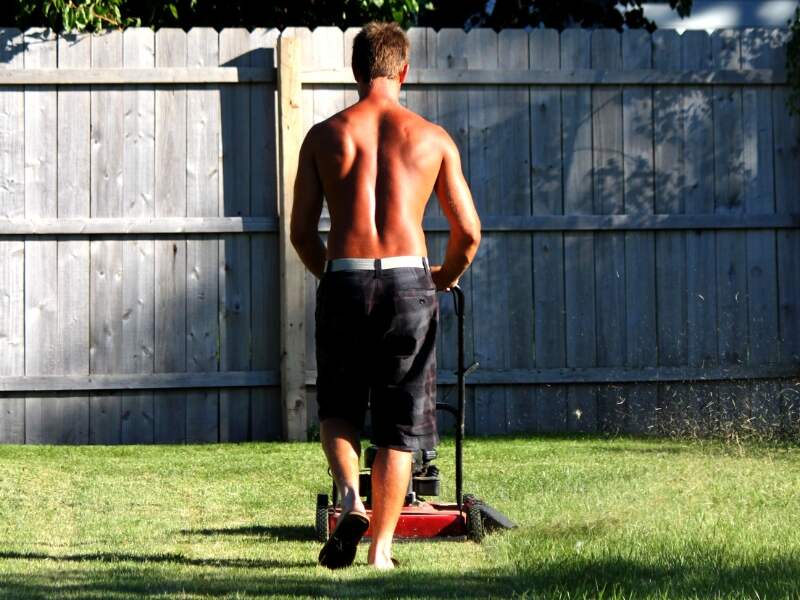
Mowing correctly is all about timing, especially during the blazing summer heat.
Unlike us, your grass can’t pick up and take itself inside the house to avoid harsh temperatures and cool off. So, to keep your lawn green and healthy when it can’t get a reprieve from the sun, avoid mowing during the middle of the day when the sun is the most intense.
At high noon—and a few hours afterward—your grass is working hard to protect its water supply. On one hand, it adores the sunshine since it drives photosynthesis, but it’s doing whatever it can to minimize how much moisture it loses. The grass will lose valuable moisture if you mow during the hottest part of the day. This moisture loss can weaken the grass, stunt its growth, and even kill it. The best time to mow is mid-morning, between 8-10 a.m.
Don’t Mow Just Before Sunset
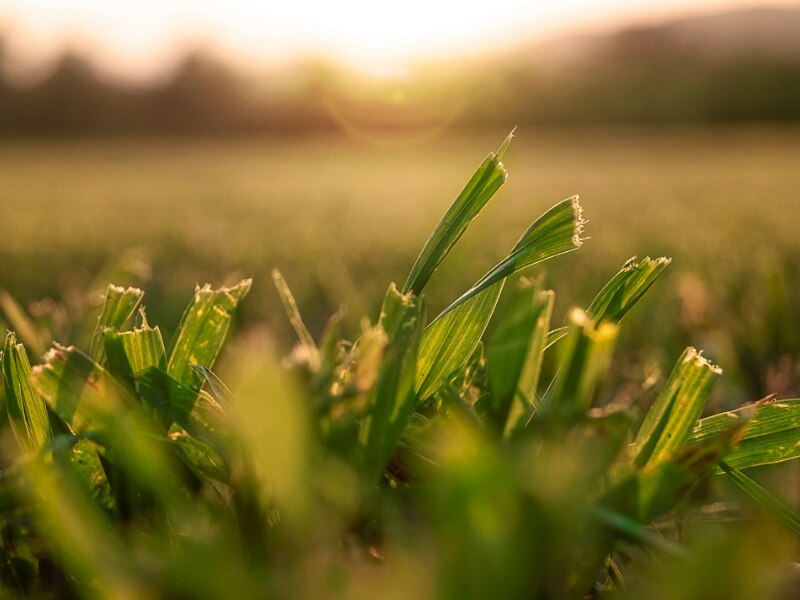
While we just talked about waiting until the hottest part of the day passes before you mow, you also don’t want to wait too long into the evening to cut grass. Your lawn needs time to recover and heal before the sun sets and dew develops. If it doesn’t have time to heal, you risk exposing your freshly cut grass to disease.
If you are mowing later in the day, the best time of day to mow is between 4-6 p.m.
Pro tip: You shouldn’t water your grass late in the day. Learn more in our guide for the when and how to water.
Don’t Mow When Your Mower Blades Are Dull
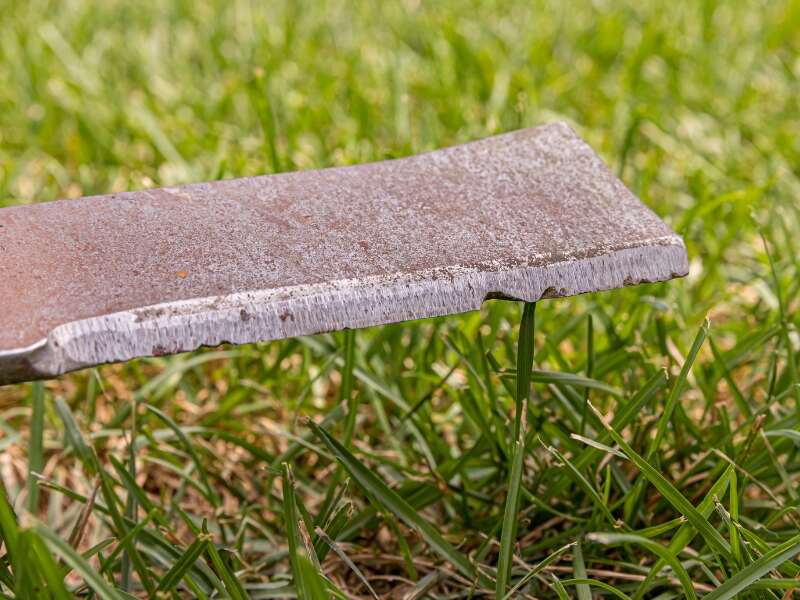
When it comes to lawn care and landscaping, one of the biggest tips for homeowners is always to cut their grass with sharp blades.
Mowing with dull, nicked, or gauged blades is not good for grass. Have you ever tried cutting wrapping paper with blunt scissors? It’s very similar.
Instead of cutting through the grass blades, your mower rips them, creating jagged edges that make your lawn appear discolored. It also opens the door, making your yard susceptible to drought and disease.
You want to sharpen the blades at least once a year, preferably in the spring, as you’re getting the mower ready for the season. Sharpening them several times a year is even better, especially if your yard has many tree roots or rocks that nick and dull the blades.
Don’t Mow Your Lawn If It’s Struggling With a Disease
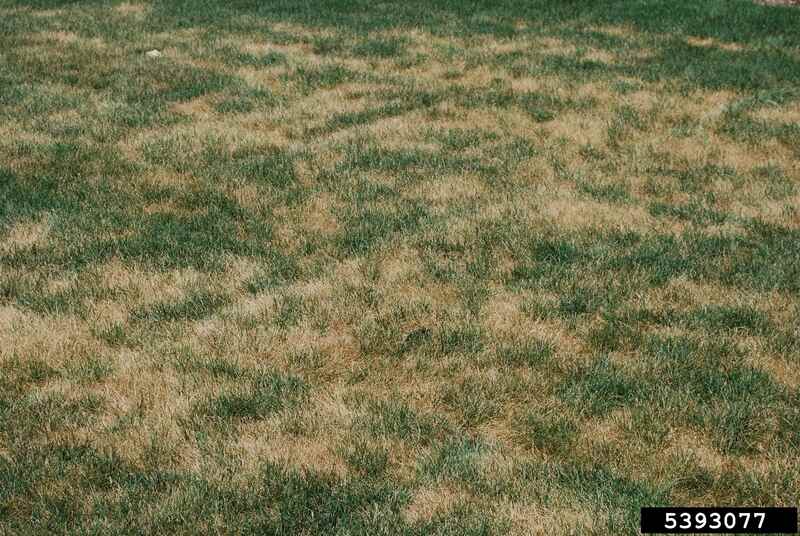
Lawn diseases are no joke, and when your grass is struggling with brown patch, dollar spot, fairy ring, or other diseases, you need to take a break from mowing.
There are a couple of reasons why.
First, a diseased lawn needs to put as much energy as possible into healing. Think of when you have the flu or a nasty cold. Do you feel up to cleaning the house or going out and running errands? Probably not. Your lawn isn’t any different. When it’s sick, it needs to focus on recovery.
Also, the last thing you want to do is spread the disease to the healthy parts of your yard. After identifying a fungal disease, treat it with the appropriate fungicide and hold off on mowing and transferring the fungal spores.
Make sure to disinfect the mower blades and the underside of the mower deck when it’s time to start cutting grass again.
Pro tip: Trying to figure out what type of disease is affecting your Kentucky bluegrass, fine fescue, Zoysia, St. Augustine, or bermudagrass? We’ve got a guide for the most common diseases for warm-season and cool-season turfgrasses.
Don’t Mow If the Temperature Is Too Low
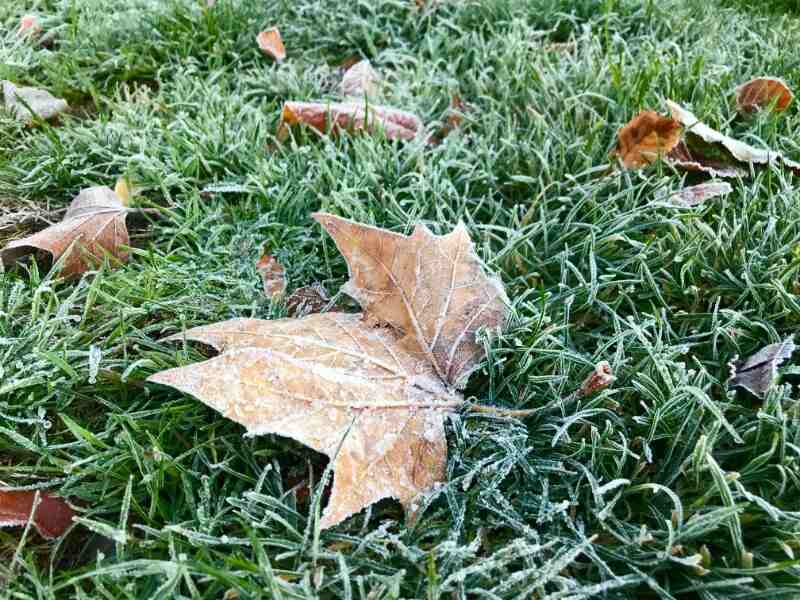
Let’s discuss the time of year and when you should stop mowing in the fall. The rule of thumb is to “keep mowing if it’s still growing.” Obviously, there’s no need to cut your grass all year. Whether you live in the frozen North or the sunny South—your lawn grows very little through winter.
Regarding the timing, you want that final mow just as your grass enters winter dormancy. When this last mow happens depends on local temperatures and the type of grass you’re growing.
Ideally, you want to stop mowing warm-season grasses when the air temperature consistently stays below 60 degrees Fahrenheit. Stop cutting cool-season grasses once the air temps drop below 50 degrees Fahrenheit.
Keeping an eye on the weather after you stop mowing is essential. If you have a week of temperatures above that threshold, it can cause the grass to start growing again, and you may need to pull the mower out one more time when the temperatures drop cold again.
Don’t Mow After You’ve Fertilized
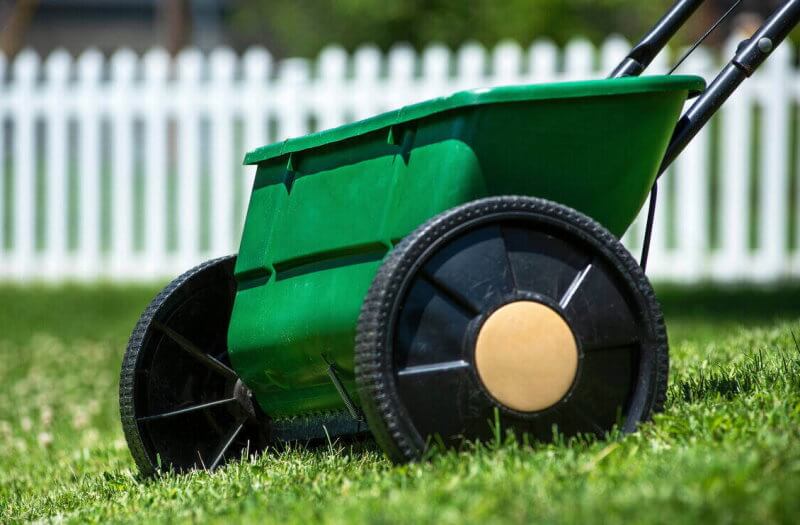
Before the first freeze in the fall, you should fertilize your cool-season lawn to help it recover from the summer and support it through the winter.
This much-needed fertilizer application helps repair the cellular damage your grass experiences under the blazing sun. It gives it nutrients and carbohydrates to store through the winter to grow strongly in the spring.
You want to time your last cut right before applying fertilizer (to learn why, check out Why and When Should You Mow Before Fertilizing Your Lawn?). If you mow after, you can disrupt the root growth that fertilizing encourages.
Finding the right timing for your region may take some trial and error, but find the right schedule and stick to it – and then pack that mower away for the winter.
FAQ About When You Should and Shouldn’t Mow Your Lawn
How often should you mow your lawn?
Mowing frequency depends on how quickly your grass grows. Cool-season grasses grow most in the spring and fall, and you can expect to mow every four to five days. During the summer, when temperatures are hot, their growth slows, and you should only cut every seven to 10 days. Warm-season grasses grow the most during the summer and typically need mowing once a week.
Do you mow before or after applying weed killer and pesticides?
When applying weed killer to tackle dandelions or pesticides to get white grubs under control, you want to time it right so the product can work efficiently.
With herbicides, time it so you’re not mowing 24 to 48 before or after application. You want the grass height a little on the longer side so the product has more surface area to stick to, and then give it time to start working. With pesticides, you want to mow just before application. Shorter grass improves the product’s soil contact. Avoid scalping the lawn; short is good, but don’t go overboard.
What is no-mow May?
The goal of No Mow May is to pause mowing during May, letting flowers in your lawn bloom to help early-season pollinators. While good in theory, you’d be better off planting wildflowers or other native plants that will draw in bees, hummingbirds, and butterflies and keeping your lawn mowed regularly.
Need Help With Mowing?
Navigating the dos and don’ts of lawn care isn’t easy. We get it, which is why we’re here!
If you need an extra hand (or two) with routine mowing and lawn maintenance, reach out to LawnStarter. We’ll put you in touch with local lawn care professionals ready to take on all your lawn care needs!
Main Photo Credit: Aliaksandr Litviniuk / Canva Pro / License